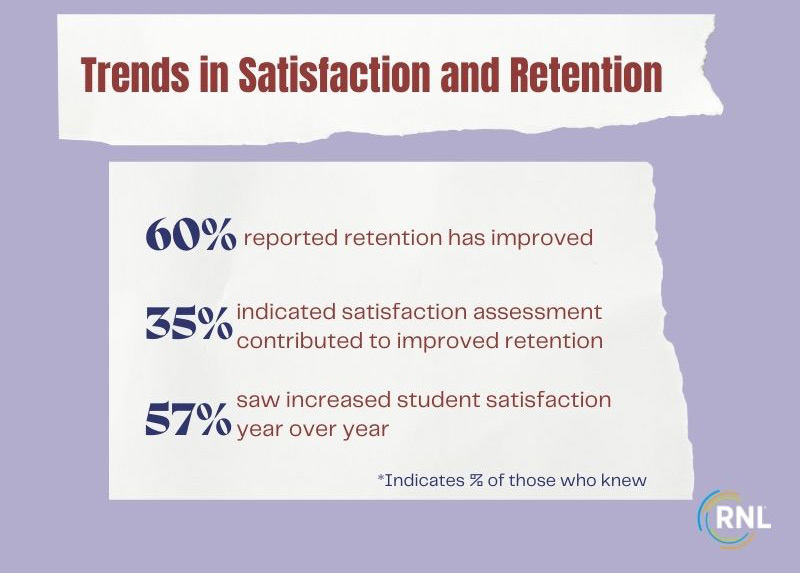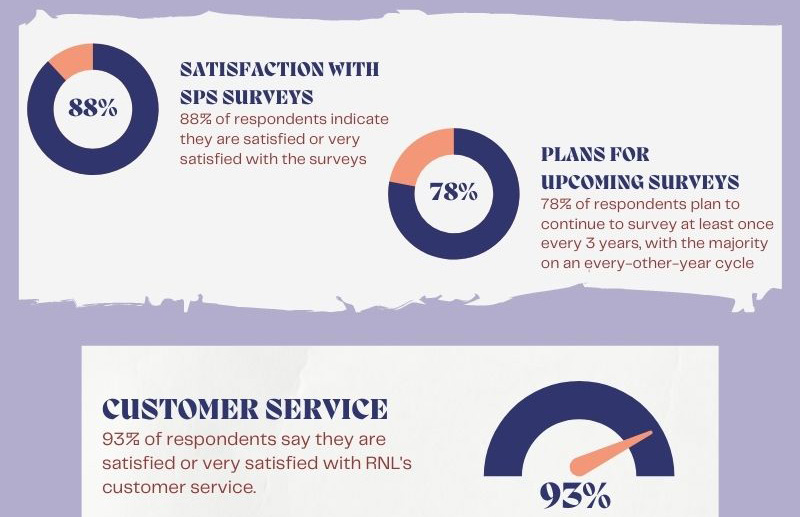student success
Using Student Satisfaction Data: What Clients Are Sharing

Using your college student satisfaction data to inform decision making can make the difference in seeing satisfaction levels increase on campus and in having effective student success efforts.
Research shows that there is a link between student satisfaction scores and individual student retention and institutional graduation rates. And we know from the feedback we have gathered from our client institutions that they are seeing retention improvement, in part because of their student satisfaction efforts.
A lot more goes into retaining students than assessing student satisfaction, but gathering that data and using it to guide institutional efforts can make a difference in keeping students enrolled. More than half of the institutions that administered the Student Satisfaction Inventory™, the Adult Student Priorities Survey™, or the Priorities Survey for Online Learners™ during 2021 saw improvements to student satisfaction as well as student retention:

Gathering data is only one part of improving student satisfaction
I know from my experience working with hundreds of campuses using the RNL Satisfaction-Priorities Surveys that the difference in whether satisfaction levels are going up year over year (or dropping instead) is based on how intentionally campuses use their satisfaction data to drive strategy. When the student feedback data guide the prioritization of institutional activities, when campuses are working to make improvements in the areas students care about, and when leadership clearly communicate to students what has been done and why, campuses see satisfaction levels increase. You need to show and tell students, “You said this on the satisfaction survey and we did this as a result because we care about your experience here.”
Ultimately student satisfaction surveys are a mechanism to listen to students and to respond to the areas that matter to them. Of course, it is important to gather the data, and creating beautiful reports for internal distribution is great as is presenting the data to campus stakeholders, but campuses can’t stop there. There needs to be a commitment to explore the results through data slicing and focus group conversations before committing to change the student experience in some way—either by making an immediate change in a policy or procedure or by including the area of concern in longer term strategic planning when additional resources are required.
One of the most cost-effective ways to change students’ perceptions (and satisfaction levels) is explaining clearly why something is the way it is or what is actually available to students. Perhaps you offer excellent career services, but students don’t know when or how to access them. That would be an example of an opportunity for better communication. Similarly, I always encourage institutions to let students know when a change has been made or is planned for in the future to close that feedback loop, especially before students are surveyed again in two or three years(see the statement above, “You said this, we did that”). You want to be able to connect the dots for students between their responses on a satisfaction survey and the actions that you are taking on campus.
Explore strategies for student assessment and retention at these events
I want you to be aware of three upcoming events which will give you a chance to hear directly from client institutions on their best practices for taking action with their student satisfaction data on campus.
- We will have a panel presentation at the AIR Forum in Phoenix, Arizona on June 7 featuring Cornell College (IA), Trident Technical College (SC) and Piedmont University (GA) sharing their experiences.
- At this year’s RNL National Conference we will have panelists from the University of Phoenix (AZ) and Granite State College (NH) on the topic of assessing online learner satisfaction, plus presenters from Utica College (NY), the University of Massachusetts, Lowell (MA), and from Mississippi Gulf Coast Community College (MS) highlighting the good work they are doing with student success efforts and satisfaction assessment.
- If you are not able to join us in person at these two events, I invite you to register for our August 3 webinar (watch this location for registration information when it is available in late July) that will highlight clients effectively using student satisfaction data.
If you are considering implementing a student satisfaction assessment on your campus in the future, I hope you will consider the instruments from RNL. In addition to telling us how the data are making a difference, our clients also share:

We would welcome the opportunity to work with you as well. I will hope to see you at one of the upcoming events this summer, or you can contact me any time by email.
Complimentary consultation on student satisfaction assessment
Talk to our satisfaction assessment experts about how you can easily implement the survey on your campus, including when is the best time to survey and how to get strong completion rates.
